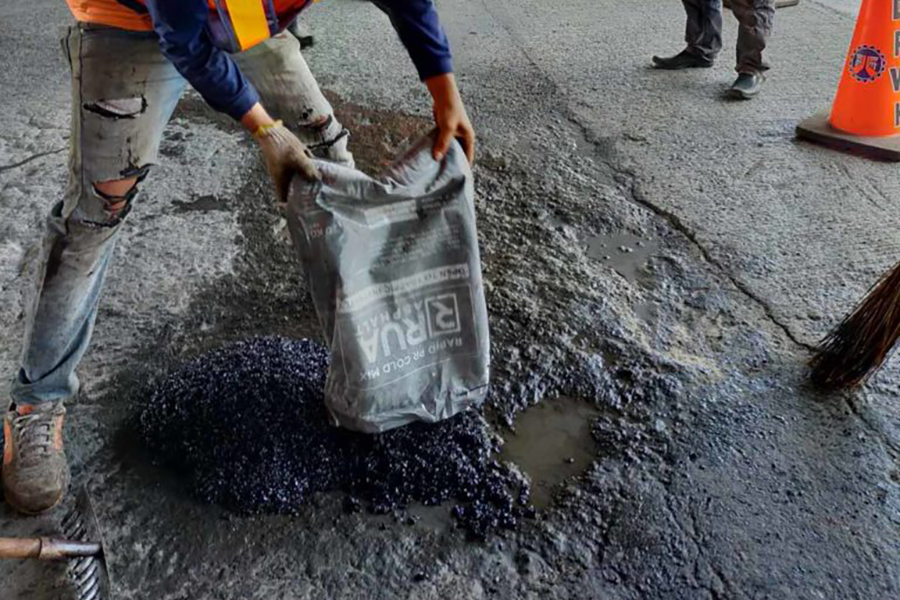Unlocking the Tricks of Hot Mix Asphalt Innovation
Checking out the midsts of hot mix asphalt innovation discovers a world where accurate solutions and meticulous processes merge to form our roadways and facilities. The combination of accumulations, fillers, and binders isn't just a building task but a strategic orchestration of durability and effectiveness. As we peer right into the elaborate dance of parts, a tapestry of strength and sustainability unfolds. But what exists underneath this surface of asphaltic proficiency, and what keys wait to be revealed in the world of paving innovations?
Value of Hot Mix Asphalt
Hot Mix Asphalt plays a vital function in modern-day infrastructure growth due to its toughness and cost-effectiveness. As the most frequently used paving material for roads, highways, and car park, Warm Mix Asphalt offers a variety of advantages that contribute to its significance in building and construction projects. One vital advantage is its ability to stand up to rush hour tons and rough climate condition, offering a resilient and reputable surface for transportation networks. Furthermore, Warm Mix Asphalt is cost-efficient in both initial construction and long-term maintenance, making it a recommended option for lots of facilities tasks.
The longevity of Hot Mix Asphalt stems from its composition, which consists of aggregates, binder, and filler products that are thoroughly selected and blended to fulfill particular efficiency demands. Overall, the value of Hot Mix Asphalt in framework development can not be underrated, as it proceeds to be a cornerstone of modern-day construction techniques.
Components of Asphalt Mixes
The make-up of asphalt mixes includes thoroughly picked aggregates, binder, and filler materials that are vital for achieving certain efficiency requirements. Accumulations are the primary element of asphalt blends, providing stamina and stability. These accumulations can be natural, such as gravel or smashed rock, or synthetic, like recycled materials from old pavements. The binder, typically bitumen or asphalt concrete, holds the accumulations with each other and provides versatility and sturdiness to the mix. The option of the binder is important as it straight affects the mix's performance in different weather. Fillers, such as hydrated lime or Portland concrete, are used to enhance the mix's workability and aging resistance. Angled Parking.
The combination and proportion of these components play a significant role in determining the quality and performance of the asphalt mix. Designers very carefully make the mix to fulfill details needs, taking into consideration variables like website traffic quantity, climate conditions, and sidewalk life-span. Appropriate choice and balancing of aggregates, binder, and fillers are vital for producing durable, long-lasting asphalt sidewalks.
Combining and Manufacturing Strategies

When the aggregates are chosen, the binder, typically asphalt cement, is included in bind the materials with each other. The binder's quality and quantity considerably affect the mix's strength, resistance, and adaptability to ecological variables. Furthermore, fillers like hydrated lime or Portland concrete might be integrated to enhance certain attributes of the asphalt mix, such as its workability or wetness resistance.
During manufacturing, the accumulations and binder are heated up, usually between 250-325 ° F(121-163 ° C ), to facilitate blending and make sure proper finish of i thought about this the aggregates. The mixing procedure needs to be extensive to achieve an uniform blend that promotes the wanted performance features of the asphalt. Different strategies, such as set mixing or drum blending, are used to accomplish click constant and top notch asphalt blends for construction tasks.
Aspects Affecting Asphalt Efficiency
Elements affecting asphalt efficiency encompass a variety of variables that affect the durability, durability, and general high quality of asphalt sidewalks. One vital element is the high quality of products made use of in the asphalt mix.

Environmental problems also affect asphalt performance. Temperature variations, dampness infiltration, and web traffic lots can all affect the architectural integrity of the pavement. Layout considerations, such as pavement density and water drainage, are necessary in guaranteeing the lasting performance of the asphalt pavement. By very carefully taking into consideration these engineers, aspects and contractors can optimize asphalt performance and improve the life span of pavements.
Lasting Practices in Asphalt Innovation

Additionally, the growth of warm-mix asphalt (WMA) innovations has acquired traction over the last few years. WMA enables for the production and placement of asphalt blends at lower temperatures contrasted to standard hot-mix asphalt, resulting in reduced power consumption and greenhouse gas exhausts. The use of permeable asphalt mixes can aid reduce stormwater runoff concerns by enabling water to infiltrate with the pavement and right into the ground, promoting natural water filtering and recharge processes. By implementing these lasting practices, the asphalt market can add to constructing a more eco-friendly and resistant framework network.
Final Thought
To conclude, warm mix asphalt modern technology plays a critical duty in modern-day infrastructure development due to its sturdiness and cost-effectiveness. By meticulously stabilizing parts, using correct mixing methods, and considering numerous factors, designers can produce high-quality asphalt blends that withstand rush hour lots and rough climate condition. Accepting lasting methods, such as utilizing warm-mix technologies and recycled products, better improves the environmental friendliness of asphalt modern technology.
Blending and manufacturing techniques in warm mix asphalt innovation entail the specific combination and handling of aggregates, binder, and fillers to create a sturdy and high-performance asphalt mix.Elements influencing asphalt performance encompass a range of variables that influence the longevity, long life, and general quality of asphalt sidewalks. Sustainable techniques in asphalt innovation incorporate different initiatives intended at decreasing the ecological influence of asphalt manufacturing and paving processes. By integrating reclaimed asphalt sidewalk (RAP) and recycled asphalt shingles (RAS) right into new asphalt blends, the industry can dramatically decrease the intake of raw materials and power, while also lowering landfill waste.
WMA enables for the manufacturing and placement of asphalt blends at lower temperatures contrasted to conventional hot-mix asphalt, resulting in lowered energy usage and greenhouse gas exhausts.